<b>Photos: </b> Texas border fence
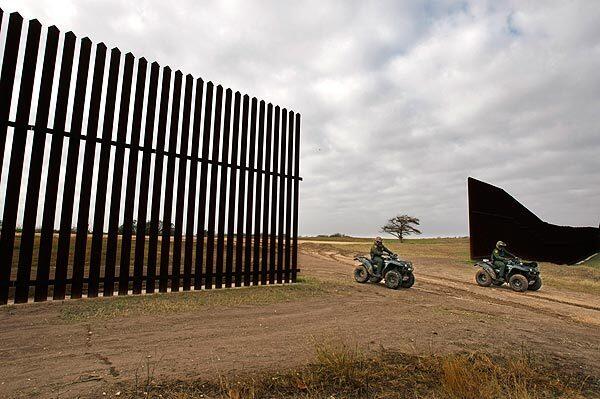
U.S. Border Patrol agents drive through a gap in the U.S. security fence along the Texas border with Mexico. At this location, near Los Indios, the barrier divides American land far north of the boundary, in part to keep the fence out of the Rio Grande flood plain. That has upset property owners, despite passages to allow them to move back and forth. Until mechanized gates are installed, such gaps also are used by smugglers and illegal immigrants. (Don Bartletti / Los Angeles Times)
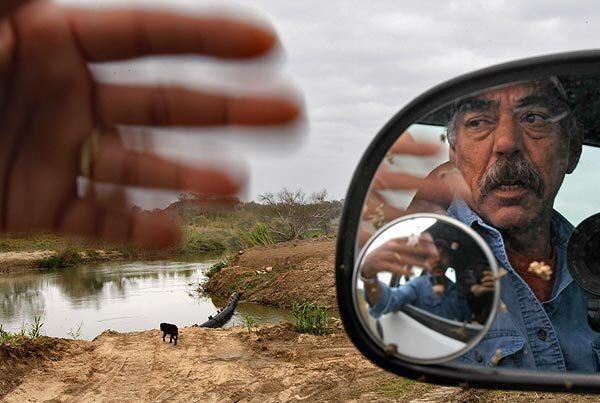
George Diego watches his dog sniff around a âfloater barrierâon the Rio Grande. The Cameron County Water District supervisor made the black plastic barrier to prevent floating corpses from clogging water pumps. He says Mexican drug smugglers and illegal immigrants sometimes meet their fate in turbulent rapids. (Don Bartletti / Los Angeles Times)
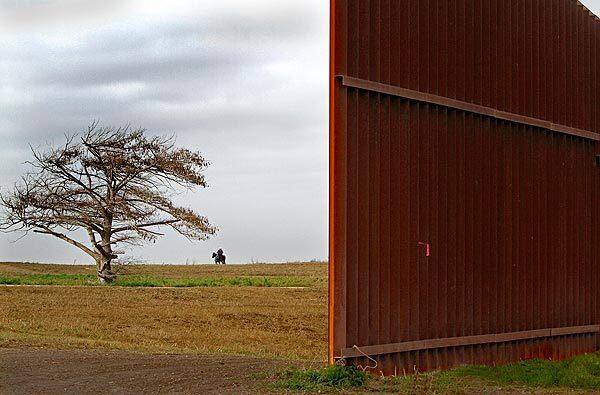
A horseman from the U.S. Department of Agriculture rides on the south side of the new U.S border fence near Los Indios, Texas,, looking for stray Mexican cattle and horses that might have crossed the nearby Rio Grande. Because of flood zones, irrigation canals and unstable river banks, the fence here is nearly half a mile north of the border. (Don Bartletti / Los Angeles Times)
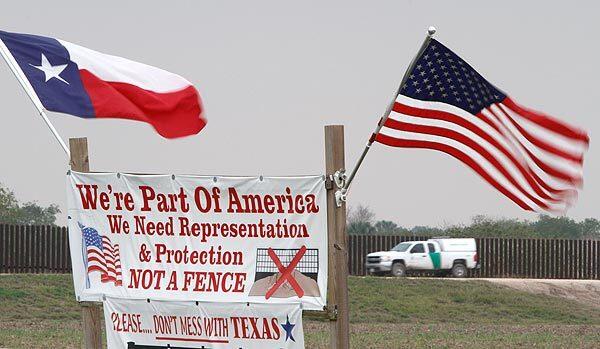
Pamela Taylorâs protest sign shows her frustration with the U.S. governmentâs construction of new border fence that left her home and property on the south side of the barrier near Brownsville, Texas. She says it feels like her home of more than 40 years isnât in America anymore because itâs sandwiched between the fence and the Mexican border. âI now live in a no manâs land,â she said. (Don Bartletti / Los Angeles Times)
Advertisement
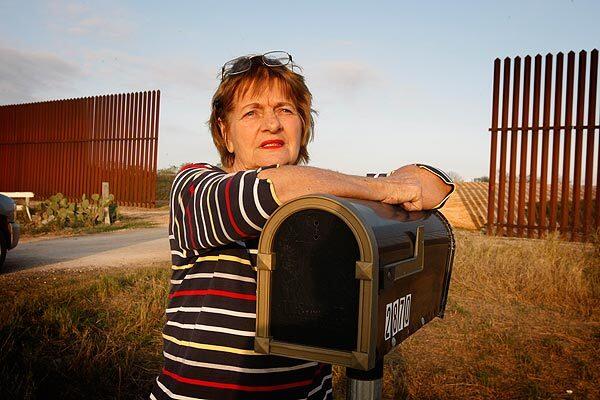
Outside Brownsville, Debbie Loop stands near the 18-foot-high border fence that now divides the Loop family farm. Her house, equipment maintenance shop and fruit stand are on north side, and her sonâs homes and groves are on the south side. The temporary gap in the barrier behind her eventually will have a mechanical gate. âI canât take it anymore,â she says of the division, the condemnation of her land and the expense of her familyâs legal battle with the government. (Don Bartletti / Los Angeles Times)
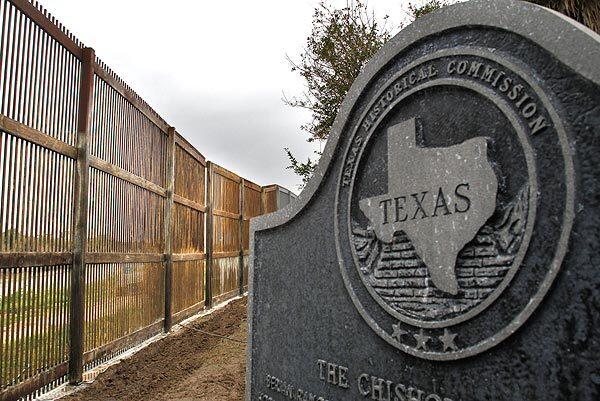
A monument in Hope Park, on a bluff above the Rio Grande in downtown Brownsville, recalls when cattle were herded through here in the 1800s. Now the new border fence all but obliterates the view of the historic river bend and Matamoros, Mexico. (Don Bartletti / Los Angeles Times)
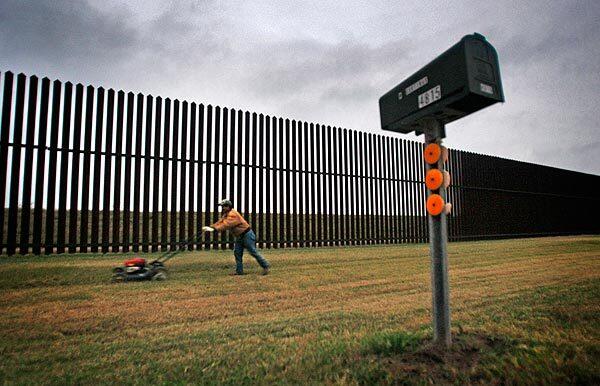
A resident on Oklahoma Avenue outside Brownsville mows along the high steel border fence thatâs designed to thwart Mexican drug runners and illegal immigrant smugglers. In many places in southeastern Texas, the fence is hundreds of yards north of the border and looms over backyards and cuts through the middle of some farms. (Don Bartletti / Los Angeles Times)
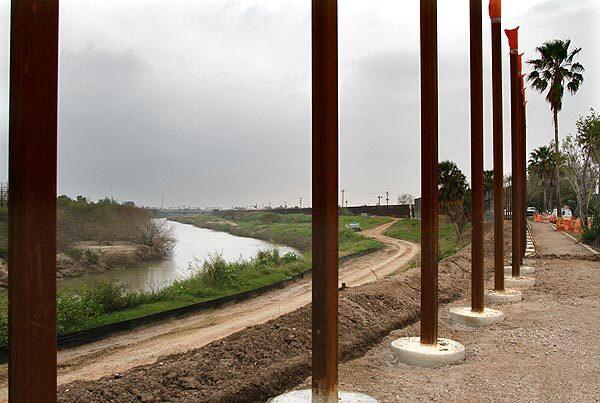
Newly set 18-foot-high steel posts cure in their deep concrete foundations along the Rio Grande in downtown Brownsville. Completion of the border fence will block the river view for visitors to the bluff-top Hope Park, but it will help the U.S. Border Patrol enforce the porus boundry against Mexican drug and immigrant smugglers. (Don Bartletti / Los Angeles Times)







